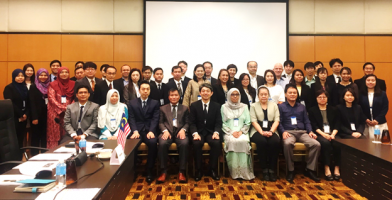
10 Jul ASEAN-Japan Chemical Safety Database Meeting

The meeting on the ASEAN-Japan Chemical Safety Database (AJCSD) was held on July 3, 2017 at the Traders Hotel, Kuala Lumpur, Malaysia. It was chaired by Mr. Masaaki Uno, Deputy Director Chemical Management Policy Division, Manufacturing Industries Bureau, Ministry of Economy, Trade and Industry (Japan)
Mr. Junya Inose, Consultant from Mitsubishi Research Institute, reported on the outcome of the 2nd Meeting of Technical Working Group (TWG) on the ASEAN-Japan Chemical Safety Database held in the Philippines in 2016 while Ms. Shinobu Yoshida from the National Institute of Technology and Evaluation (NITE), the operator of the AJCSD, introduced the current status of the AJCSD including the access status during the full operation since its initiation of full operation, data provision via Excel format and several search functions.
Delegates from Cambodia, Lao PDR, Malaysia, Myanmar, Philippines, Thailand and Viet Nam provided brief presentations on the current status and anticipated schedule for any revision on the provided regulations and/or any additional chemical management regulations including national chemical inventory and risk assessment system, the current situation/plan on the GHS implementation, including the information on the edition of the Purple Book used by the government; related regulation/ standard/ guideline/ data source for the GHS classification, SDS and labelling; GHS classification results of existing chemicals, the progress and future contributions to the AJCSD which was presented by each member country in the last TWG, and plans of possible further contributions, e.g., data provisions of other regulations, sample SDSs, GHS classification results as references, notification forms, guidance documents
